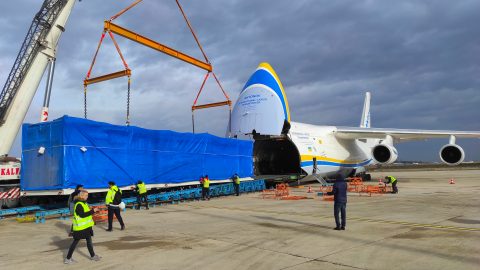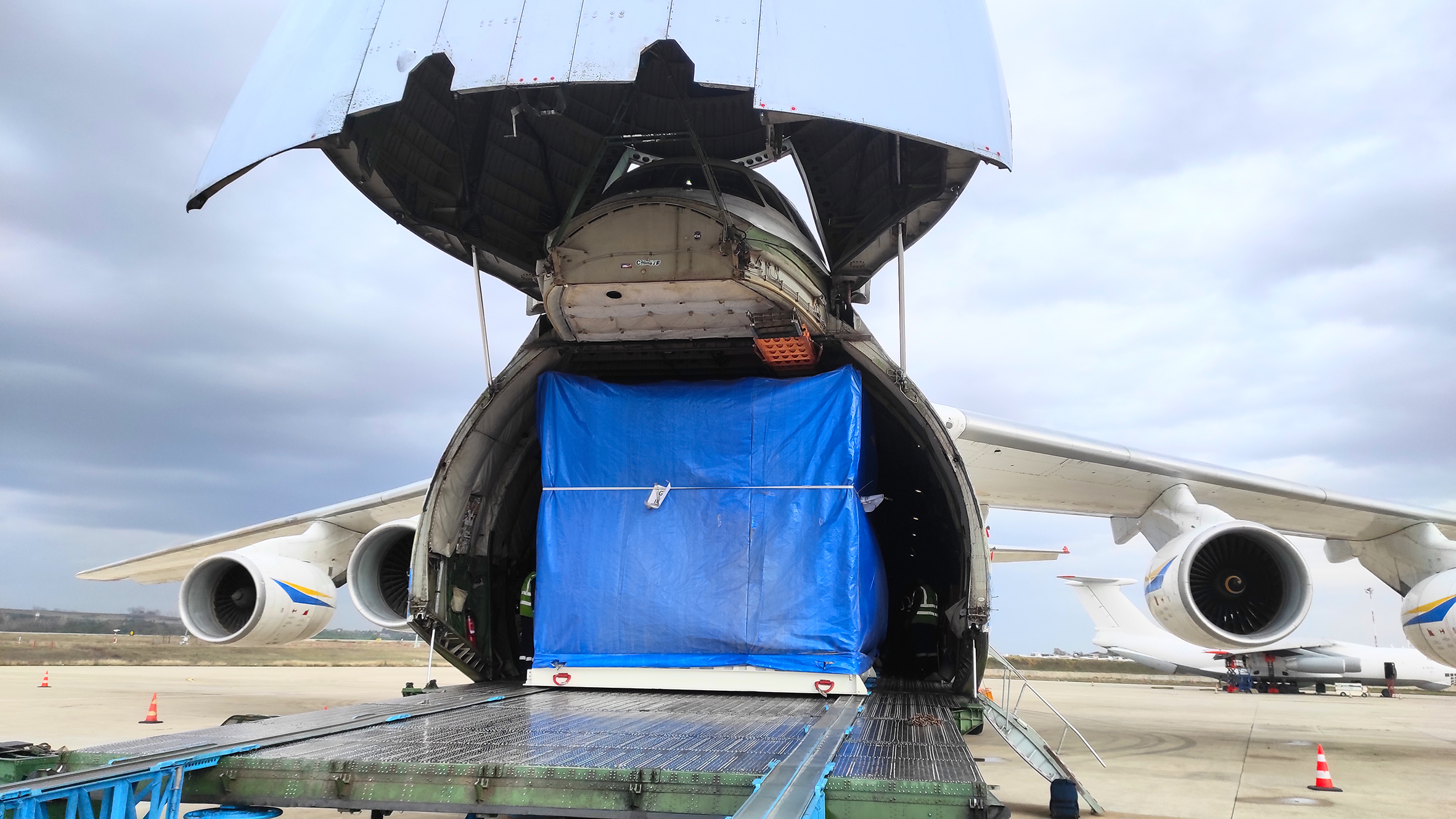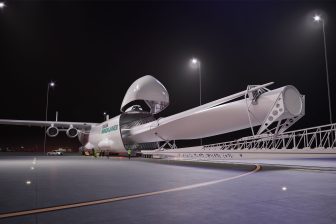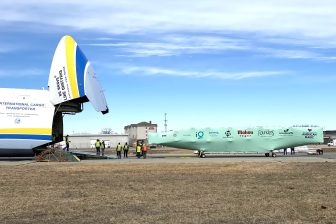
Project cargo flown in to Germany for an LNG import facility
Since the war in Ukraine started, Germany put its LNG import plans into high gear, developing three FSRU-based facilities over a brief period. Three floating storage and regasification units arrived in the country since mid-December 2022.
Commenting on the project, Volodymyr Goncharov, commercial executive, Antonov Airlines noted that a floating LNG terminal was scheduled to go into operation in Elbe port at the beginning of 2023 to ensure uninterrupted gas supply to German household.
The LNG project is being implemented by RWE and the FSRU Höegh Gannet arrived to Elbehafen in January. RWE noted that in order to be able to use LNG for gas supply as quickly as possible, the FSRU will be operated at Brunsbüttel Ports’ existing dangerous goods jetty.
Later on in the project, the FSRU will move to a newly built jetty to the west of the Elbehafen. Brunsbüttel Ports will be responsible for the construction, which will start in the first quarter of 2023.
The fast-paced development of the project required a quick solution to deliver a power supply skid from Turkey to Germany.
Antonov Airlines flies in
Responding to the time-sensitive transport request, Antonov Airlines and Rolf Riedl, delivered the power supply skid from Tekirdag, Turkey to Hamburg, Germany on board of one of its AN-124-100-150 aircraft. E-House is a prefabricated sub-station used as power distribution centre. It was required for Germany’s first LNG terminal of high priority to provide an independent and low-emission energy supply system.
The E-house was transported in the container measuring 19.00 metres in length, 4.24 metres in width, and 4.01 metres in height, designed by Siemens Energy. To load and onload the oversized container on/from the aircraft cargo cabin a special loading ramp, Antonov in-house design, was used in conjunction with external cranes.

“The major task was a precise installation of low-profile loading ramp required especially for this mission. Thanks to a professional approach, the Antonov team ensured safe loading and unloading at airports under the supervision of a Siemens Energy representative,” said Andrii Nazarenko, flight manager, Antonov Airlines.
You just read one of our premium articles free of charge
Register now to keep reading premium articles.




